Plan of "lightning war" of Japan against the USSR
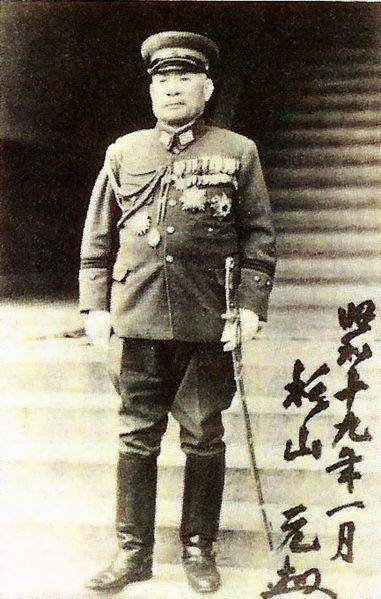
In post-Soviet Russia, it became fashionable to flout old conclusions and opinions, the liberal fad and Soviet-Japanese relations were affected during World War II.
Despite the findings of the International Military Tribunal for the Far East, which summed up a clear result of the imperial Japan’s foreign policy towards the USSR: “The Tribunal believes that aggressive war against the USSR was envisaged and planned by Japan ... that it was one of the main elements of the Japanese national policy and that its goal was to capture the territories of the USSR ... ", the current liberal publicists and modern Japanese historians are trying to refute this conclusion.
Even a carefully designed and launched plan of aggression against the Union - "Kantokuen" ("Special Maneuvers of the Kwantung Army") - is being presented as a purely defensive plan adopted to defend against the attack of the Soviet troops.
While in Japan, however, a whole body of previously secret documents of the imperial meetings, the Imperial Headquarters Coordination and Government Committee, the General Staff and the Main Naval Staff, and other state and military authorities, which confirm the findings of the International Military Tribunal, were published.
Lightning war in japanese
At a meeting of the imperial meeting held on July 2 1941, the Japanese leadership set about preparing the solution to the problem of the North: "Our attitude towards the German-Soviet war will be determined in accordance with the spirit of the Tripartite Pact (union of the three powers - Germany, Japan, Italy. - S. A.) However, until we intervene in this conflict. We will secretly strengthen our military training against the Soviet Union, maintaining an independent position. At this time we will conduct diplomatic negotiations with great caution If the German-Soviet war develops in a direction favorable to our empire, we will resort to armed force to solve the northern problem and ensure the security of the northern borders. "
With the adoption of this course, the General Headquarters of the Army and the Military Ministry of Japan planned a whole system of measures aimed at quickly preparing the Kwantung Army to conduct an offensive war in the Far East and Siberia. This plan received the name "Kantokuen" in secret documents.
11 July 1941, the imperial headquarters sent a special directive under the number 506 to the Kwantung Army and other Japanese armies in Northern China. It confirmed that the purpose of the "maneuvers" is to prepare for a strike on the USSR. This plan took as the basis for the development of the Japanese General Staff 1940 of the year.
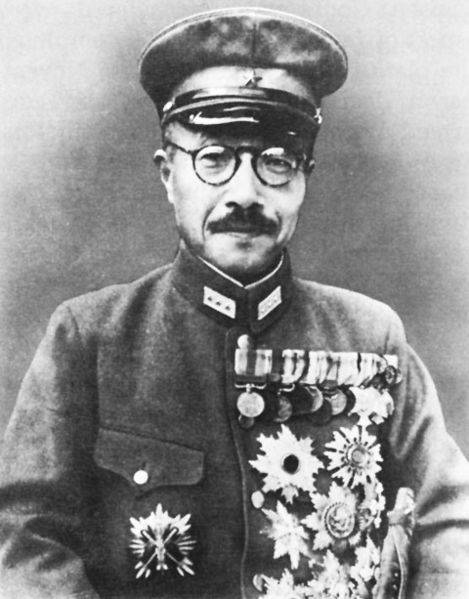
Tojo, Hideki Minister of the Army from 1940 to 1944 year.
The essence of the strategic plan:
- it was supposed to defeat the Red Army in Primorye, Amur and Transbaikalia and force them to capitulate by a series of successive strikes of Japanese forces on the main axes; capture strategic military, industrial facilities, food bases and communications;
- Much attention was paid to the Air Force, they were supposed to liquidate the Soviet air force in the first hours of the war with a sudden blow;
- the task is to get through to Baikal in 6 months and complete the main operation;
5 July issued a directive of the High Command, according to which they conducted the first stage of mobilization, increasing the Kwantung Army to the 2 divisions (51 and 57).
7 July, the emperor allowed to carry out a covert call and call in the armed forces of half a million people, vessels were also allocated a tonnage of 800 thousand tons for the transport of military goods to North China. All activities were carried out in the strictest confidence, under the legend of training fees for credits, and was called "extraordinary appeal." Families were banned from seeing the word “mobilization” replaced by the term “extraordinary formations” in the documents.
July 22 began to concentrate troops at the Soviet border, but such large-scale events were difficult to keep secret. Only through points on the territory of Korea, one day, up to 10 of thousands of fighters and 3,5 of thousands of horses passed through. The Ambassador of the Third Reich in Japan, Ott, and the military attache Kretschmer 25 in July reported to Berlin that in Japan, 900 was intended for thousands of people between the ages of 24 and 45 years. Persons who spoke Russian went to North China.
3 fronts were formed - east, north and west, 629 units and subunits, including 20 divisions, were sent to them, then their number was planned to be strengthened by 5 divisions. A part of the units was redeployed from the Sino-Japanese front. After the second stage of mobilization (order number 102 from 16 July 1941), the number of Japanese troops at the borders of the USSR increased to 850 thousand people.
Military units in the Kuril Islands, on South Sakhalin and Hokkaido were brought to full combat readiness.
In total, it was planned to use up to a million people in the attack; in Korea and in the north of China, stocks of ammunition, fuel, food, and medicines were created for waging an intensive war during the 2-3 months.
Auxiliary forces
In addition to the Japanese army itself, the armed forces planned to introduce armed forces of puppet state formations - Manchu imperial army states of manchukuo Its number was more than 100 thousand people (in 1944 year - more than 200 thousand), small arms were not worse than the Japanese, there were a lot of machine guns, weak artillery was also practically without air forces and armored vehicles.
Mengjiang National Army - Mengjiang, a puppet state formed by the Japanese military administration in the central part of Inner Mongolia (Chahar, Rehe and Suiyuan provinces). The army ranged from 4 to 20 thousand people. Armament is weak, most of the composition - the cavalry.
They were under the command of the headquarters of the Kwantung Army and under the direct supervision of Japanese military advisers. Japanese officers trained local residents from military-trained reserves. In 1940, the law on compulsory military service was introduced in Manzhou-Guo. Mengjiang’s army was intended to be invaded by the Japanese forces into the Mongolian People’s Republic. According to the plan "Kantokuen" it was envisaged to "create an environment in which a voluntary union of Outer Mongolia with Inner Mongolia would occur."
White emigrants, the Japanese did not forget about the White Guards, since 1938 were formed parts of the Russians (who had extensive combat experience), for the war with the USSR, for example: the brigade of Colonel Kvantunsky army Makoto Asano, the Cossack cavalry detachments under the command of Colonel Ivan Aleksandrovich Peshkov, united into a unit Peshkovsky detachment. By virtue of their vast combat experience, they were intended to carry out reconnaissance and sabotage operations: their tasks included damage to railways and other communications, communications, strikes against supply bases in the rear of the Soviet troops, conducting reconnaissance, sabotage, conducting anti-Soviet propaganda. According to the plan "Kantokuen", by the order of the commander of the Kwantung Army special divisions were formed.
“Russian Fascist Organization”, Harbin.
The tasks of the Japanese imperial fleet
The Japanese Navy had to support the landing of landing forces on Kamchatka, support the operation from the sea to occupy North Sakhalin and seize Vladivostok, and destroy the Soviet Pacific Navy. July 25 ordered the formation of the 5 fleet specifically for the war with the USSR.
Readiness for operation
By August, the Japanese armed forces were ready for a “blitzkrieg”. By the beginning of the Soviet-German war, Japan had personnel 14 divisions in Korea and North China. In the beginning, they planned to bring their numbers to 34 divisions, redeploying 6 divisions from Japan and 14 from the Chinese front. But the command was opposed by the Japanese Expeditionary Army in China.
At the end of July, the Ministry of War and the General Staff decided to reduce the invading forces to 25 divisions, then to 20. 31 July 1941 at a meeting of the Chief of Operations of the General Staff Tanaka with the Minister of War Tojo, the final decision was made: for the war against the Soviet Union, 24 divisions will be needed. In reality, the Japanese concentrated the grouping of forces in the 850 of thousands of "bayonets", which is equal to the Japanese infantry divisions 58-59. The Japanese command believed that they would stand up to the 30 Soviet divisions, and created a double superiority.
10 August 1941 in Tokyo should have made a final decision.
Doubts of the Japanese Command
In the second half of July, the Japanese command began to doubt the success of the German Blitzkrieg. The Japanese began to analyze the course of hostilities and made a few observations:
- the vastness of the tetra of military operations allows the Wehrmacht to wage a war of maneuver, but at the same time helps the Soviet troops to conduct a proper retreat, and the Red Army could not be destroyed in border battles.
- Partisan war seriously complicate the life of the Wehrmacht.
Japan is trying to find out from Berlin the timing of the completion of the campaign. The Japanese ambassador in Berlin, Oshima, later testified: “In July and early August it became known that the German army’s pace slowed down. Moscow and Leningrad were not captured on schedule. In this regard, I met Ribbentrop to get an explanation. He invited Field Marshal Keitel’s meeting, who said that the slowdown in the German offensive was due to the large length of communications, resulting in lagging rear units. Therefore, the offensive was delayed by three weeks and". Tokyo increasingly doubts the possibility of a quick defeat of the USSR. Doubts reinforce Berlin’s increasingly insistent demands to open a second front against the Soviet Union.
Doubts that the Red Empire is a titan on clay feet, were in Japan before. Thus, an employee of the Japanese embassy in Moscow, Yesitani, in September 1940, warned: "The absurdity is the opinion that Russia will fall apart from the inside when the war begins." 22 July 1941 of the year Japanese generals were forced to admit in "Secret Diary ..." (it evaluated the events and situation on the fronts of the Second World War): "Exactly one month passed since the beginning of the war. Although the operations of the German army continue, the Stalinist regime turned out to be durable. "
By the beginning of August, the 5 Division of the Intelligence Directorate of the General Staff (its activity is the USSR) concluded in the document "Assessment of the Current Situation in the Soviet Union" that: "Even if the Red Army leaves Moscow this year, it will not capitulate. Germany’s intention quickly to complete the decisive battle will not be realized. Further development of the war will not be profitable for the German side. "
But the military command of the army and navy did not support the doubts of the Ministry of Foreign Affairs and intelligence, military preparations were going at full speed. Chief of Staff Sugiyam and Minister of War Tojo said: "There is a high probability that the war will end with a quick victory for Germany. It will be extremely difficult for the Soviets to continue the war. The statement that the German-Soviet war is being delayed is a hasty conclusion." The Japanese army elite did not want to miss the opportunity to strike at the Union with Germany.
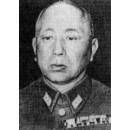 The military of the Kwantung Army especially insisted: its commander Umezu handed over to the center: "The favorable moment will surely come ... Right now the rarest case, which happens once a thousand years, is presented to implement the state policy towards the Soviet Union. It is necessary to grasp it ... If there is an order to start fighting, I would like the operations to be provided by the Kwantung Army ... I repeat once again that the main thing is not to miss the moment for the implementation of state policy. " The Kwantung Army insisted on an immediate strike. Its chief of staff, Lieutenant-General Yoshimoto, persuaded the head of the operational department of the General Staff Tanaka: "The beginning of the German-Soviet war is an opportunity for us to solve the northern problem. We need to reject the theory of ripe persimmon and create a favorable moment ourselves ... Even if the training is insufficient, speaking this autumn you can count on success. "
The military of the Kwantung Army especially insisted: its commander Umezu handed over to the center: "The favorable moment will surely come ... Right now the rarest case, which happens once a thousand years, is presented to implement the state policy towards the Soviet Union. It is necessary to grasp it ... If there is an order to start fighting, I would like the operations to be provided by the Kwantung Army ... I repeat once again that the main thing is not to miss the moment for the implementation of state policy. " The Kwantung Army insisted on an immediate strike. Its chief of staff, Lieutenant-General Yoshimoto, persuaded the head of the operational department of the General Staff Tanaka: "The beginning of the German-Soviet war is an opportunity for us to solve the northern problem. We need to reject the theory of ripe persimmon and create a favorable moment ourselves ... Even if the training is insufficient, speaking this autumn you can count on success. "Why did Japan not strike
The main sign of the emergence of a favorable moment - "ripe persimmon" - considered the weakening of Soviet forces in the Far East and Siberia. The Japanese General Staff believed that the "blitzkrieg" in Japanese was possible only if the Russian group was reduced from 30 divisions to 15, and the number of armored vehicles, artillery and aircraft was two-thirds.
Intelligence reported that during the week of 3 war, only 17% of personnel and about a third of armored vehicles were redeployed from the Far East. In addition, the personnel immediately replenished reservists. They noted that the forces of the Trans-Baikal Military District were mainly being transferred, while the other groups of the Red Army were barely affected.
With great attention, the Japanese General Staff followed the Soviet aviation. According to him, the Soviet Air Force had 60 heavy bombers, 450 fighters, 60 attack aircraft, 80 long-range bombers, 330 light bombers and 200 naval aircraft. One of the rate documents dated July 26, 1941 stated: "In the event of war with the USSR, as a result of several bombing attacks at night with ten, and during the day with twenty to thirty airplanes, Tokyo can be turned into ashes." After the German attack, no more than 30 squadrons were transferred from the Far East, according to Japanese intelligence. This was not enough to weaken the Soviet Air Force, especially its bombing potential.
The Soviet army in the Far East remained a formidable force, the Japanese perfectly learned Halkin Gol's lesson. One thing is a sudden blow to a defeated country, another thing is a blow to a well-trained and technically equipped army. The promise of Berlin to seize Moscow in 3 weeks turned out to be unfulfilled.
28 August, the complete pessimism was recorded in the Secret War Diary: “Even Hitler is mistaken in the assessment of the Soviet Union. So what can we say about our intelligence agency. The war of Germany will continue until the end of the year ... What is the future of the empire? The prospects are bleak. Truly, the future cannot be guessed ... "
3 September at a meeting of the coordinating council of the government and the imperial stakes, the meeting concluded that "since Japan will not be able to deploy large-scale operations in the north until February, it is necessary during this time to quickly carry out operations in the south."
In this way, The Red Army in the summer of 1941 broke not only the plan of the German Blitzkrieg, but the plan of the Japanese “blitzkrieg” war against the USSR, in Tokyo decided not to take the risk and come to grips with the South strategic direction. 6 September in the "Program for the implementation of the state policy of the empire" was decided to seize the colony of the Western powers in the South, if necessary, to enter the war with the United States, Britain, Holland. To this end, by the end of October to complete all military preparations. The meeting participants came to the unanimous opinion that there would be no better time to attack England and the United States.
Military preparations against the USSR were postponed until the spring of 1942, the Soviet intelligence officer Richard Sorge reported this to Moscow.
In Berlin, Japanese Ambassador Oshima told the Reich leadership: “At this time of the year military operations against the Soviet Union can be undertaken only on a small scale. It will probably not be too difficult to occupy the northern (Russian) part of Sakhalin Island. In view of the fact that the Soviet troops suffered heavy losses in battles with German troops, they can probably also be pushed back from the border.However, the attack on Vladivostok, as well as any advance towards Lake Baikal at this time of year is impossible, and due to the circumstances this is until spring. " The Japanese army had the experience of invading the Far East and Siberia in 1918-1922, so it was even more dangerous to launch an invasion in the conditions of the Siberian winter.
Results
Japan did not attack the USSR not because of the strict implementation of the neutrality pact between the USSR and Japan, but because of the failure of the German blitzkrieg plan and the preservation by Moscow of reliable cover for the country's eastern regions.
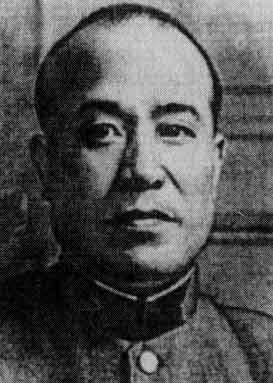
Tanaka Shin-ichi, head of the 1 of the (operational) Directorate of the General Staff.
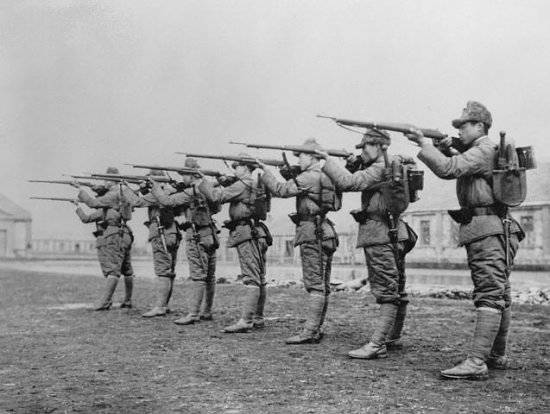
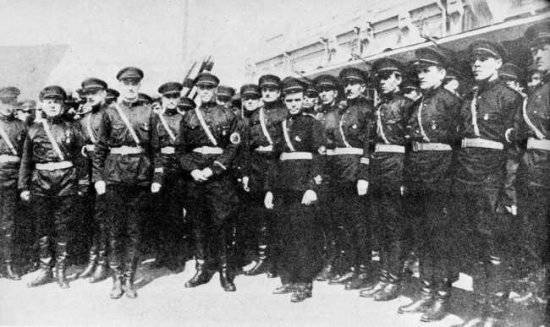
Information